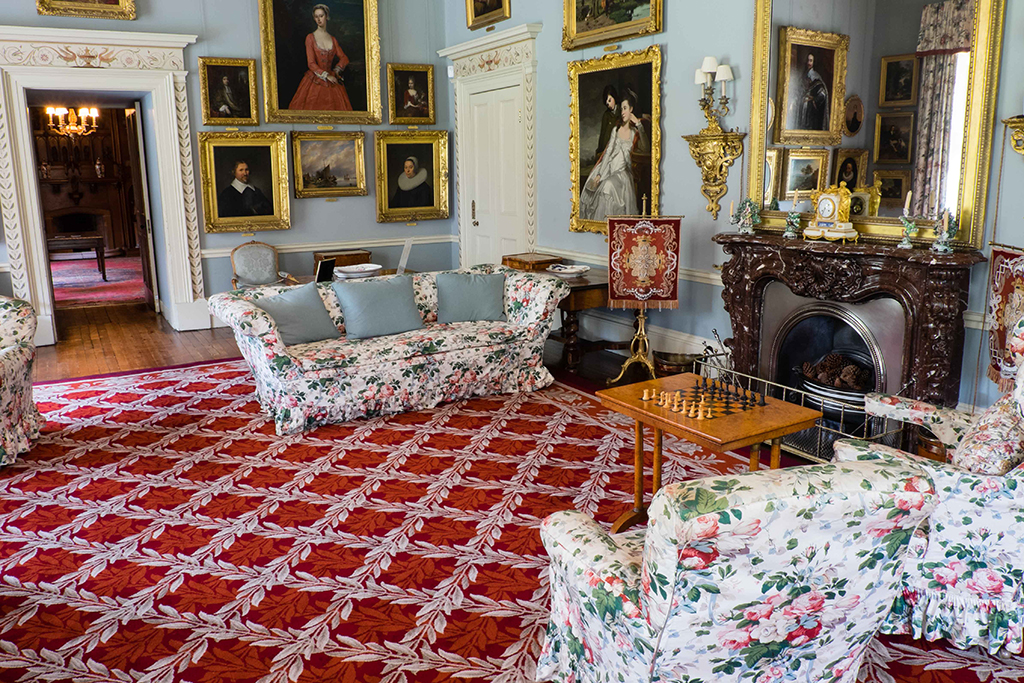
Brodie Castle shows how clan chiefs used to live
Approached down a milelong, tree-lined avenue, Brodie Castle lies near the Moray Firth, between Forres and Nairn, in an isolated setting near the village of Brodie in the heartland of the clan.
The pinkish hue of the castle only comes into view in the last 200 yards of the drive. It is not surrounded by hills or flowing rivers, but stands mysteriously on its own, isolated from view.
Being one of the original clans of Morayshire, the Brodie chief, Michael, received a charter of the lands in 1311 from Robert the Bruce, converting the Celtic thaneage into a barony.
The present day castle was built in 1609 by Alexander Brodie of Brodie and is a handsome example of Scottish architecture, originally being a ‘Z’ shaped tower house. The chief at the time also held the Thaneage of Brodie by right of succession, although other lines – such as the Brodies of Lethen and Brodies of Spynie – did inherit the chiefship.

The drawing room at Brodie Castle
Given its design, the castle has many staircases up and down its five storeys, in order to connect the four towers. The ground floor houses the library, which was designed by the architect James Wylson in 1846 and crafted in American oak. The shelves are lined with old editions of Blackwood’s magazine embossed with the chief’s crest. It is not surprising that this was the favourite room of Ian Brodie, the 24th chief and noted breeder of daffodils.
Ascending the main staircase, one passes numerous Dutch paintings by artists such as Willem van de Vliet and Thomas de Keyser.
Paintings of Venice and Antwerp Cathedral reflect the collection made by Ian’s wife, Violet, while a fine portrait of Catherine the Great of Russia quietly dominates the staircase, which leads to the oak-panelled dining room. The table is perfectly laid with a Chinese armorial dinner service, which carries the family coat of arms and the Brodie motto ‘Unite’.
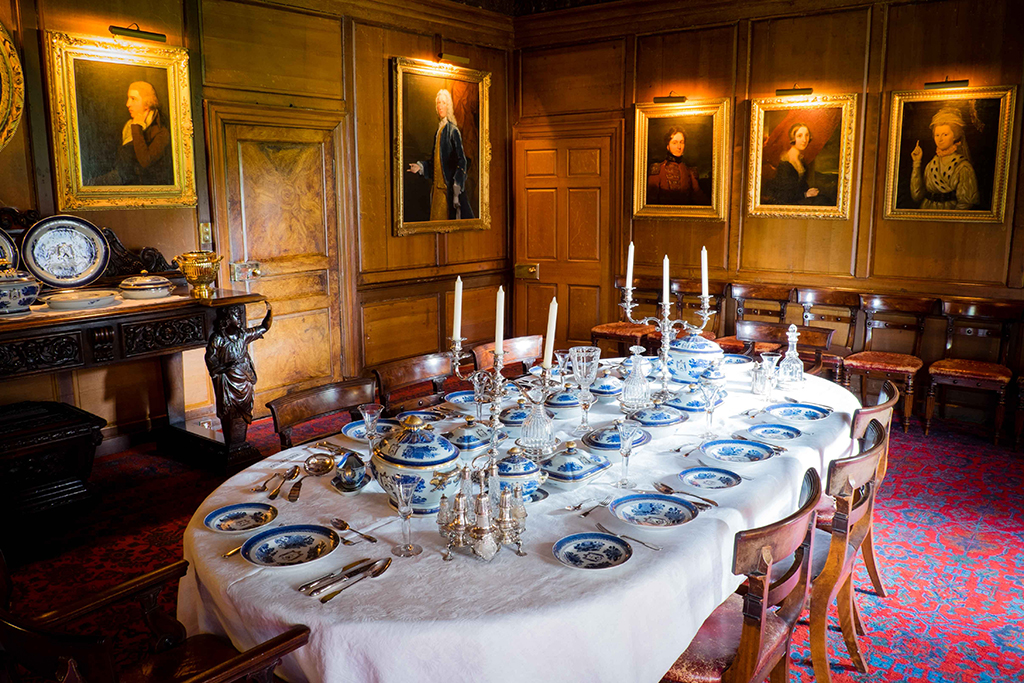
Brodie Castle’s dining room
Family portraits covering some 100 years from the mid-18th century line the walls, linking the Brodies with other great families, such as the Earls of Fife and the Gordons. Foremost among these portraits is that of Alexander, the 19th chief and Lord Lyon King of Arms between 1727-1754, painted by Allan Ramsay.
In a side room is a small but significant space known as the blue sitting room, which is lined with electric blue wallpaper. The plasterwork bears the initials of Alexander Brodie and his wife Elizabeth Innes, to commemorate their marriage in 1635. Plunging from the ceiling is the Brodie crest, a clenched fist clutching three arrows.
From the dining room, a passageway leads to the red drawing room, or the High Hall as it was known, with its fireplace designed by the Sobieski brothers. The deep red damask wallpaper gives the room a feeling of warmth and depth, before proceeding to the drawing room.
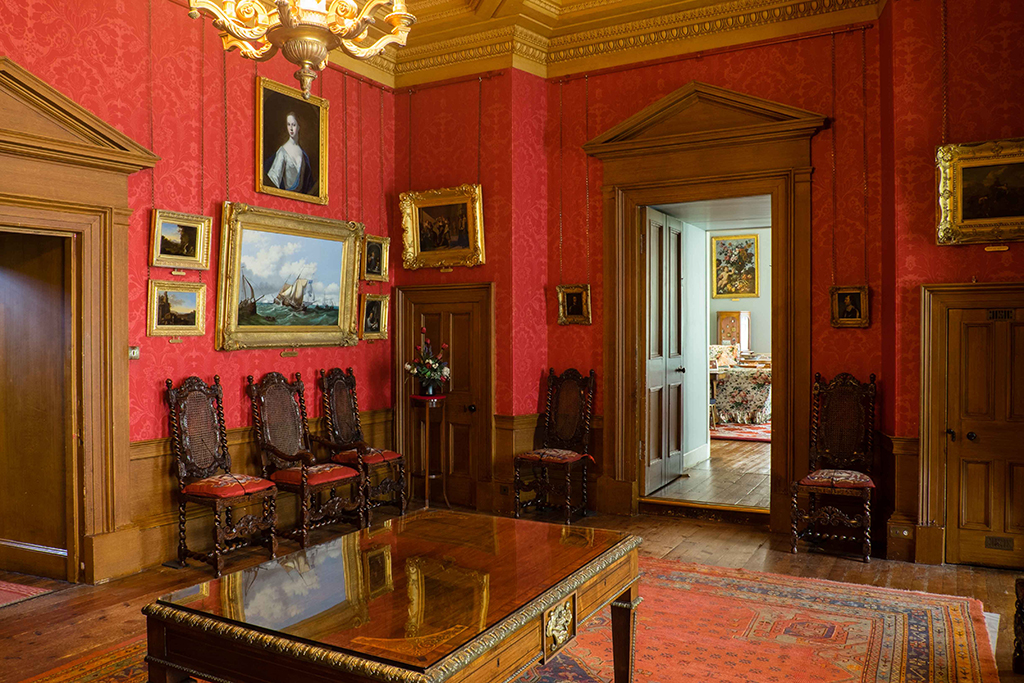
The red drawing room
This is a bright and airy room at the east end of the castle, that retains its 1830s feel with grand family portraits and a portrait of Charles I by Van Dyck. A large group portrait of children depicts William, 22nd chief, in a red suit with six siblings. Held aloft by his sister, he clearly stands out, gazing intently at the viewer and surrounded by his brother and sisters.
As the staircase climbs ever upwards, corridors lead to the bedrooms on the fourth and fifth floors. The blue bedroom and dressing room were added to the castle in 1820. Watercolours adorn the walls, including works by Cotman, Fielding and Ibbetson. They are plain, simple and spacious, with northern light pouring in through the windows, while the dressing room is reminiscent of the 1950s with metalled gold bedposts.
The principal bedroom is positioned above the dining room and has a grand view of the landscape out to the west, with glimpses of the Cairngorm mountains.
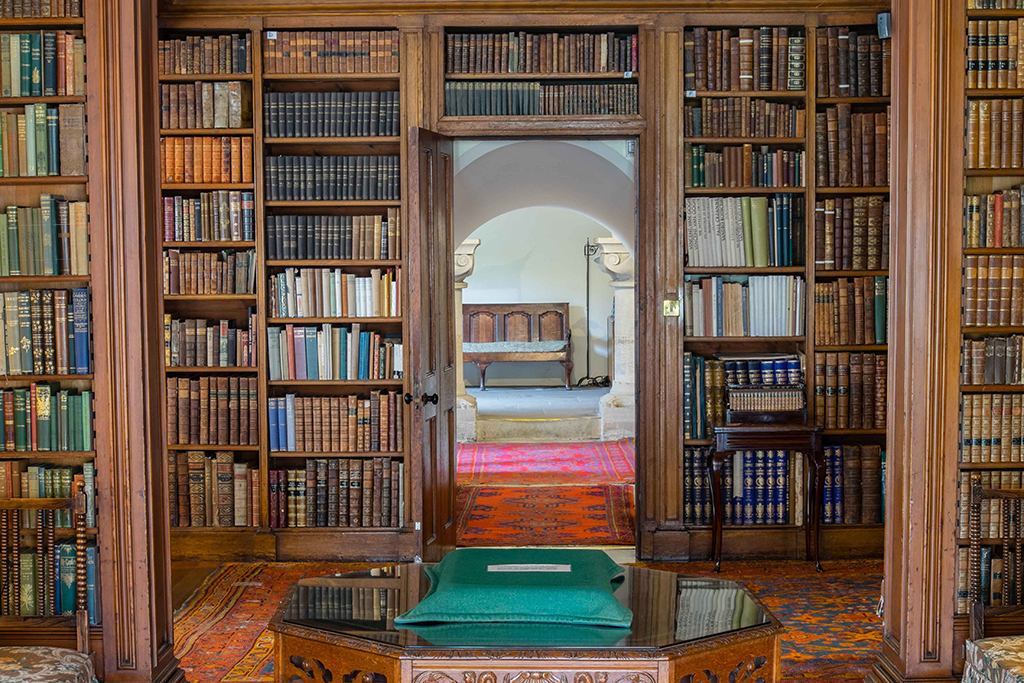
The magnificent library
The room is furnished with supreme 18th-century lacquer tables and chairs, glinting in the sunlight.
This is a castle with a notable history, having been in the ownership of the chiefs of Clan Brodie for 370 years, with the family claiming descent from the Thaneage of Brodie more than 700 years ago.
Writing in 1908, the historian of the Highland clans, Frank Adam, said the castle, ‘was uninterruptedly the seat of Brodie of Brodie from time immemorial to the present day’. In 1980, due to spiralling maintenance costs, Ninian Brodie of Brodie, the 25th chief, placed the castle in the hands of the National Trust for Scotland, who now own and manage it.
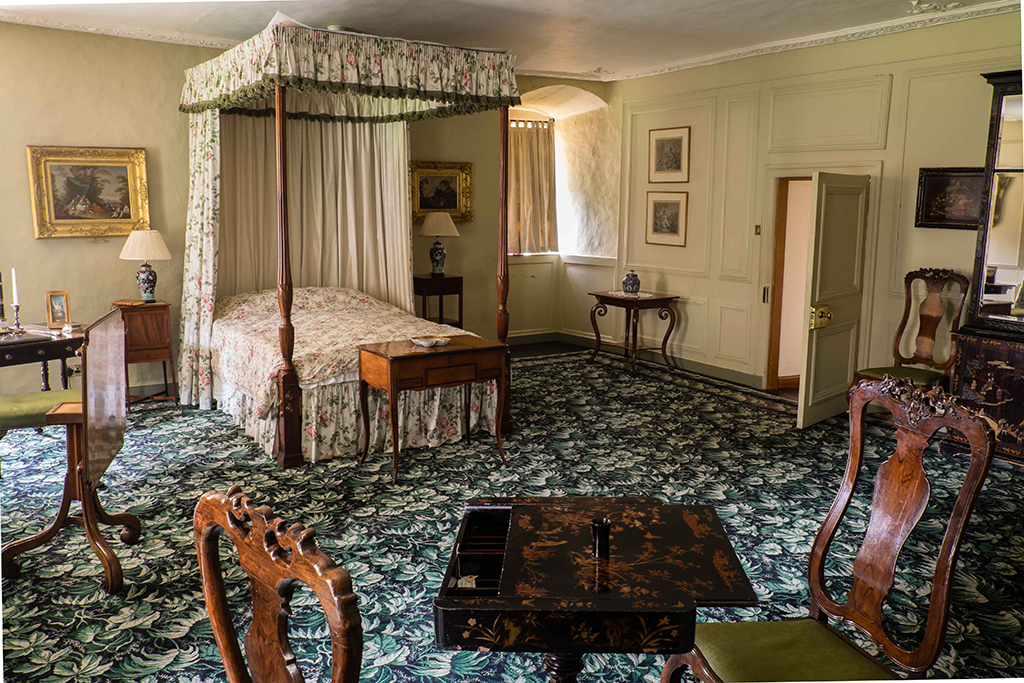
The green bedroom
The castle reflects the fortunes of Brodie clan chiefs over the years. Their marriages, children, occupations and way of life. Despite the fact that Culloden battlefield and the Hanoverian Fort George are only some 20 miles away, the clan and its chiefs were never caught up in the Jacobite dramas.
Not just a magnificent castle, but its owners were skilfully adept in the politics of the day – they ensured the survival of the castle intact.
This feature was originally published in 2016.
TAGS

